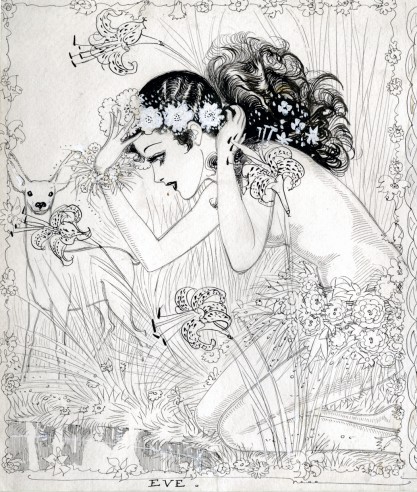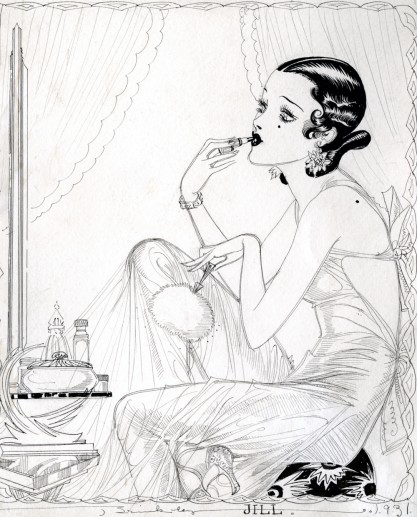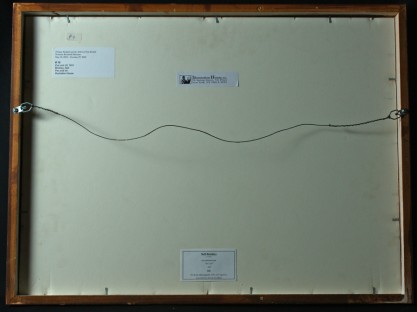



A two paneled signed pen & ink illustration drawing by Nell Brinkley published as an interior illustration in a 1931 edition of Life magazine. On the left the biblical Eve is seen in the Garden of Eden, in harmony with nature and god’s living creatures before her fall into temptation. The right image shows Jill, a characteristically vain Brinkley Girl at her mirror applying lipstick. The juxtaposition presents a lightly satirical jab at the stereotypically self-absorbed modern flapper, a theme that was all the rage during the golden age of illustration. Verso retains an exhibit label from 2002 showing that this drawing was included in an exhibition at The Norman Rockwell Museum titled Norman Rockwell and the artists of New Rochelle.



A partial biography of the artist by Martha Kennedy for the Library of Congress:
During what historians call the era of the “New Woman,” increasing numbers of women pursued higher education, romance, marriage, leisure activities, and a sense of individuality with greater independence. New era women sought equality and opportunity through more active roles in the public realm.
Nell Brinkley stood out during this period as a female pioneer in the field of illustration, a woman artist who created the “Brinkley Girl,” a highly popular icon. She drew active idealistic young women in illustrations for newspaper feature stories that she wrote. “Golden Eyes,” a World War I heroine who promoted the sale of Liberty Bonds and supported overseas war efforts, emerges as one of Brinkley’s most memorable creations.
In her fine-lined Art Nouveau manner, Brinkley portrayed her heroine as a dynamic, windblown symbol of women’s active patriotism.”
“The Three Graces”, her drawing which idolized “the three graces of suffrage, preparedness and Americanism,” set a new standard for feminine beauty and inspired a whole generation of women artists, including Dale Messick, the creator of the comic series ‘Brenda Starr, Reporter.’
